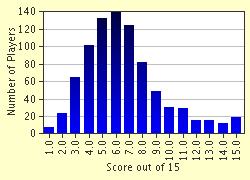Quiz Answer Key and Fun Facts
1. Is the job of a Bog Iron Hunter just what it seems, or is there something more to it? What exactly did a Bog Iron Hunter do?
2. With what type of object or material did a Fuller work?
3. In medieval times, treatment of wounds, and some other conditions, was carried out using leeches to remove blood. Doctors required a constant supply of leeches from Leech Collectors, but how were leeches usually obtained?
4. For many years an essential ingredient of mortar was lime, and the production of this vital material could be quite risky. What sort of hazards did a Lime Burner face in the course of his work?
5. What did a Turnbrooch do for a living?
6. During the reign of Henry VIII, the Groom of the Stool had a position of considerable trust. What was the main responsibility of his office?
7. The work of the Gong Scourer was physically demanding and could be quite lonely. What did these essential workers do for a living?
8. One of the most dangerous jobs was that of the Petardier. Why was this job so dangerous?
9. Throughout Europe during the 17th century, Musketeers were a common sight. What exactly did Musketeers do?
10. An unusual job title was that of the Knockknobbler. What exactly were this person's duties?
11. The Lobblolly had a peculiar job title, but his work was of considerable importance to those requiring his services. What services did he provide?
12. During the 18th and early 19th centuries, Back Tenters were often child workers, but what sort of work did they do?
13. Mudlark sounds as though it could be a fun way to earn a living, but was it really? What did a Mudlark do?
14. A common slang expression, meaning something is nonsense, is to say "that's a load of tosh". This saying derives from the occupation of Tosher, so what did a Tosher do for a living?
15. A fairly common job in Cornwall, England, was that of Bal Maiden. What would she have done for a living?
Source: Author
picqero
This quiz was reviewed by FunTrivia editor
gtho4 before going online.
Any errors found in FunTrivia content are routinely corrected through our feedback system.

